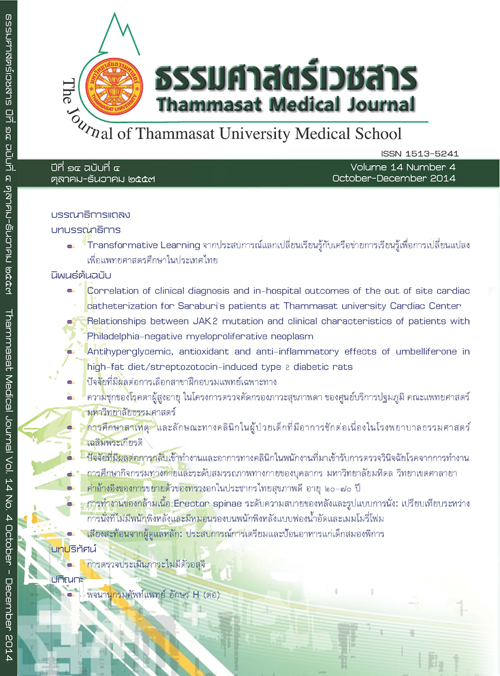Factors influencing return-to-work and clinical outcome among employees participating in the diagnosis of occupational diseases
Keywords:
Return to work, Occupational diseases, Work-related diseases, การกลับเข้าทำงาน, โรคจากการทำงาน, โรคเกี่ยวเนื่องจากการทำงานAbstract
Introduction: The objective of this study was to determine proportion of return to work, factors influencing return-to-work and symptoms.
Method: The study design was a cross-sectional descriptive study. The study population were 292 patients receiving an occupational disease diagnosis service at occupational medicine clinic, Nopparat Rajathanee hospital during October 1, 2011 - September 30, 2013. Data were gathered from medical records and telephone interviews. Data were analyzed using percentage, mean, standard deviation and chi-square test.
Result: Proportion of return to work after diagnosis two weeks was 93.8 percent. A barrier to return to work was illness with internal medicine diseases. Factors associated with better symptoms were female, referral by medical personnel, illness with internal medicine diseases and musculoskeletal diseases. On the other hand, factors associated with poor clinical outcomes were illness with eye, ear, nose, and throat diseases, illness from toxic chemicals, received diagnosis as occupational diseases and referral by employers.
Discussion and Conclusion: Awareness of prevention and health surveillance of occupational diseases with internal medicine diseases should be carried out. Policies could properly aim to provide return to work programs for employees.
Key words: Return to work, Occupational diseases, Work-related diseases



